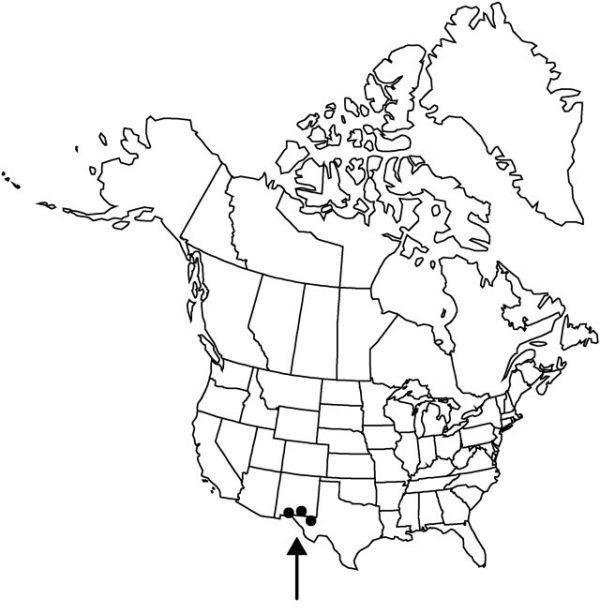Agave parryi subsp. neomexicana
Sida 15: 259. 1992.
Rosettes flat-topped, 3.5–4.5 × 4–6 dm. Leaves ascending, 17–45 × 4–12 cm; blade lanceolate; margins straight, teeth 5–7 mm, 1–3 cm apart; apical spine dark-brown, subulate or acicular, 2.5–3 cm. Scape (2–) 3–4.5 m. Inflorescences: lateral branches (7–) 10–17, slightly ascending. Flowers 5.5–6.7 cm; perianth red to orange in bud, yellow to yellowish green at anthesis, tube 12–18 mm, limb lobes erect to ascending, 15–20 × 3–4 mm; filaments inserted (sometimes irregularly) above mid perianth-tube, green, 3.5–4.5 cm; ovary neck 4–7 mm. Capsules oblong, 2.5–3.5 cm. 2n = 120.
Phenology: Flowering mid spring–early summer.
Habitat: Gravelly to rocky places in grasslands and desert scrub
Elevation: 1600–2100 m
Discussion
The Mescalero Apaches were so named because of their use of Agave parryi subsp. neomexicana. The rosettes were baked to produce a sweet, sticky food source. Overuse probably accounts in part for the limited distribution and infrequent occurrence of the species. H. S. Gentry (1982) suggested “the extensive stands of agaves along the eastern bajada of the Sierra Guadalupe” in New Mexico and Texas today may have been “a tribal no-man’s-land” between the warring Comanche and Apache peoples. E. B. Granick (1944) reported the plant as “tetraploid” without actually providing a chromosome number.
Selected References
None.
Lower Taxa
"thick" is not a number. "thin" is not a number."dm" is not declared as a valid unit of measurement for this property."dm" is not declared as a valid unit of measurement for this property.
